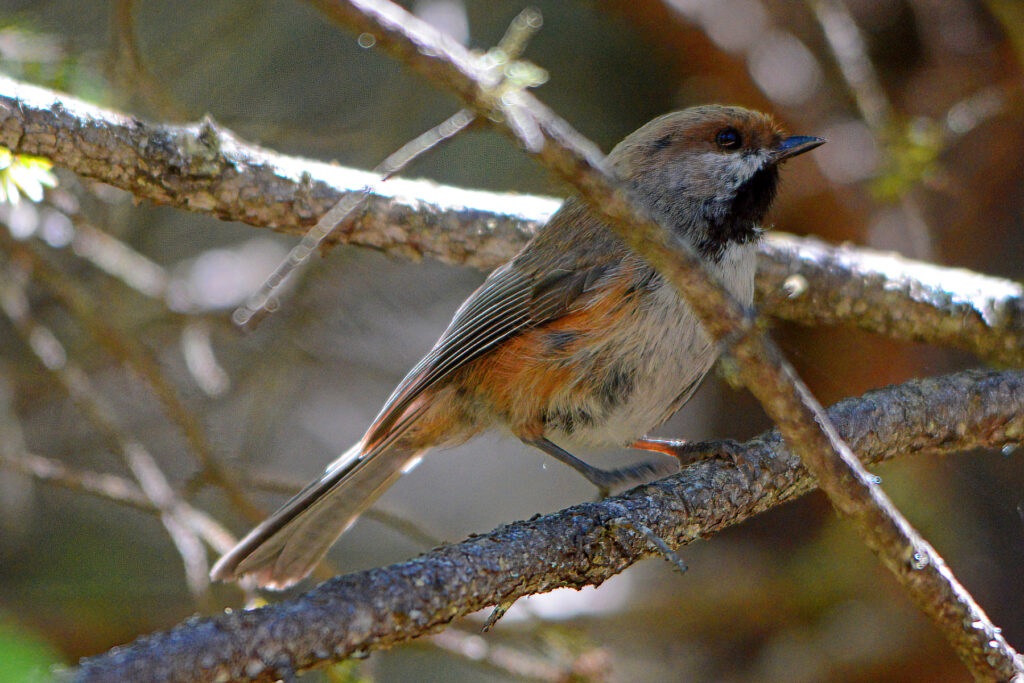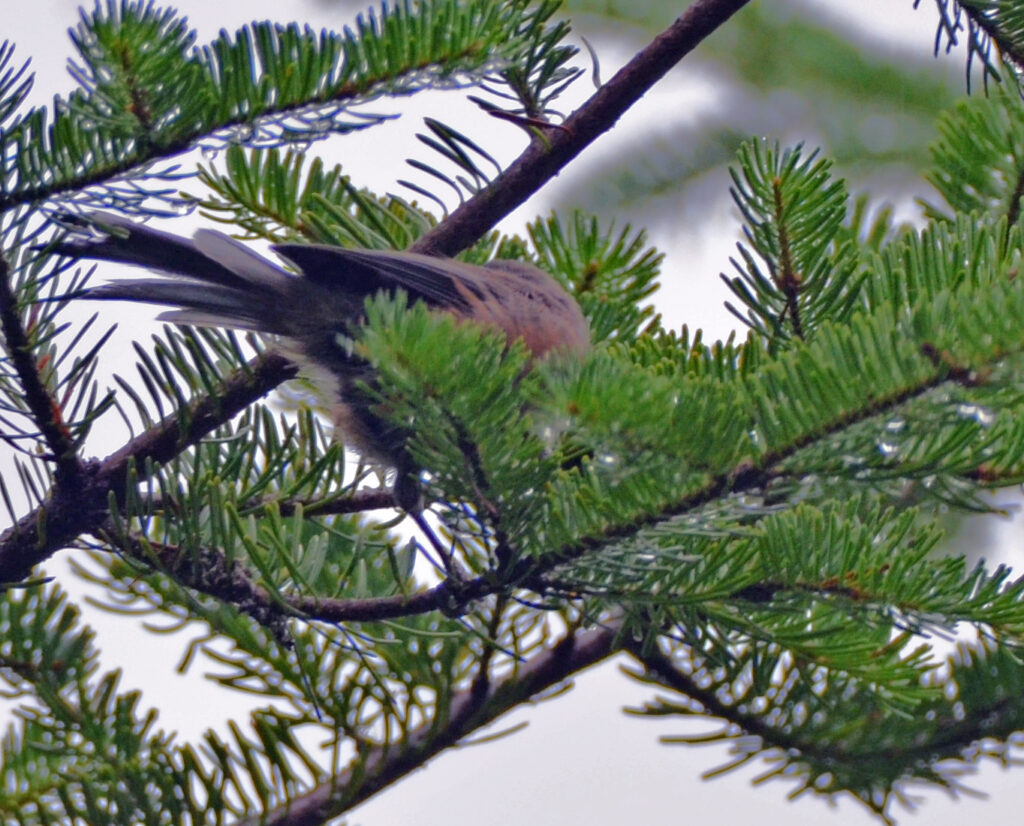
The Boreal Chickadee (Poecile hudsonicus) is a small passerine bird found in the boreal forests of North America. It measures about 4.5-5.5 inches in length and weighs approximately 0.3-0.4 ounces. The species has a round body, a short bill, and a prominent black cap that extends down to its eyes. It also has distinctive brownish-gray plumage on its back and wings, and a buffy-white underside with a black bib. The Boreal Chickadee’s unique features make it easily distinguishable from other chickadees.
The Boreal Chickadee is a non-migratory bird that lives in the northernmost parts of North America. The species is found year-round in Alaska, Canada, and parts of the northeastern United States. In the winter, the bird may move slightly southward in search of food. However, it typically stays within its breeding range throughout the year. During the breeding season, Boreal Chickadees inhabit the dense coniferous forests of the boreal zone, where they forage for insects and seeds among the branches.
The Boreal Chickadee is known for its distinct calls, which are used for communication and territorial defense. The species’ vocalizations include a high-pitched “chick-a-dee-dee-dee” call, a soft “chick” note used for communication between mates, and a low-pitched “churr” call used as a territorial warning. These calls, along with the bird’s unique plumage, make it easy to identify in the field.
The Boreal Chickadee is a social bird that often forms flocks with other chickadees during the winter months. The species’ flocks may include other small birds, such as nuthatches and kinglets. During the breeding season, Boreal Chickadees typically form monogamous pairs, with both partners working together to build a nest and care for their young. The species’ nest is typically located in a natural cavity, such as a hole in a tree or a crevice in a rock face.
Unfortunately, the Boreal Chickadee’s population is currently declining due to habitat loss and fragmentation. Conservation efforts are underway to protect the bird’s breeding habitat and to promote sustainable forestry practices that benefit the species. Despite its small size, the Boreal Chickadee is an important member of the boreal forest ecosystem, and its conservation is crucial to maintaining the health and diversity of North America’s northern forests.
